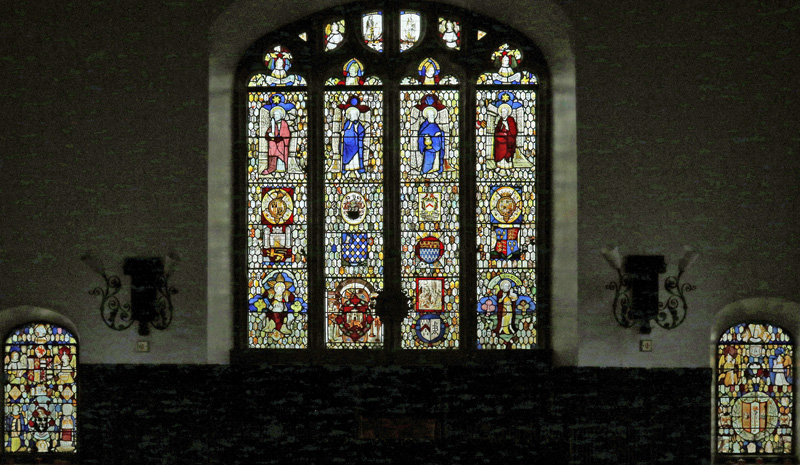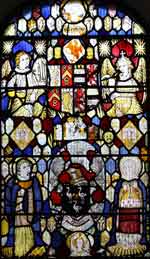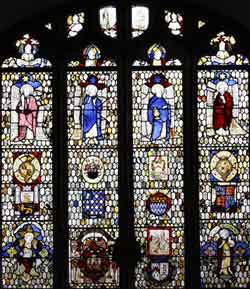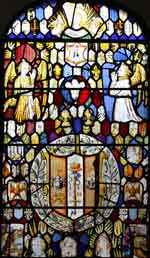Stained Glass of the Norwich Guildhall
The Guildhall was the first large civic structure of the city. It replaced a small thatched toll house whose main role was to collect market fees. Building began in 1407 and it was essentially completed in 1453 when the windows of the Mayor's Court were recorded as being glazed.
The distinctive east façade with its checker pattern in “flushwork” dates from the 16th century. It is built with lozenge and triangular checkerwork of flint contrasted with freestone. Several 18th-century additions and much reconstruction during the 19th century are evident in the structure.
Stained glass would have been inserted in at least two of the rooms in the Guildhall namely the council chamber and St Barabara’s chapel, the latter of which no longer remains but was founded in the middle of the fifteenth century and occupied an upper room on the south side of the Guildhall. Robert Toppes was mayor when the Guildhall was completed and was personally responsible for instigating the glazing of the council chamber. It is here in three east facing windows that the building’s remaining stained glass is displayed. The style of the surviving 15th century glass is identical to the Toppes window in St Peter Mancroft. It is known that Toppes was associated with the Norwich glazier and Alderman John Wighton and it is therefore likely that the Wighton workshop was commissioned to make the glass.
It is lucky that any 15th century glass survives at all as in 1511 the roof of the mayoral council chamber collapsed. When it was eventually restored in 1534-7 the ruling elite seized the opportunity to advertise their sense of civic pride, wealth and status by financing the glazing of the windows which reused both original glass and new material. Donors included: John Fuller, Thomas Necton, Nicholas Sotherton and Augustine Steward.
For further information and to view the details of each window click the ![]() boxes below.
boxes below.



